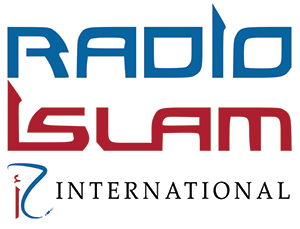The Real Muslim Women
Quick Recap – Not Oppressed, Not Perfect, Just Human
This Women’s Month, the theme “The Real Muslim Woman” aims to break down stereotypes and challenge the narrow narratives that define Muslim women in media and society. Too often, Muslim women are portrayed as either oppressed victims or exceptional role models — leaving little room for their real, lived experiences.
The focus is on the constant pressure Muslim women face to prove their worth: to appear empowered, devout, and perfect, both to outsiders and within their own communities. This unrealistic standard silences their struggles and erases their individuality.
The phrase “Not oppressed, not perfect — just human” reminds us that Muslim women, like all women, are complex, diverse, and human — not symbols or stereotypes. They deserve to be seen and heard for who they truly are, in all their strengths, flaws, faith, and individuality.
This theme calls for honest conversations that allow Muslim women to share their full stories — not to fit into someone else’s idea of what a Muslim woman should be, but to define it for themselves.
Hijab is MY Choice vs Hijab is Oppression
Few symbols in the modern world carry as much debate, judgment, and misunderstanding as the Hijab. For some, it represents modesty, dignity, and devotion. For others, it is viewed as a sign of female oppression, forced piety, or patriarchal control. Somewhere in between lies the voice that is often missing in mainstream discussions — the voice of the women who actually wear it.
Today let`s explore the tension between two dominant narratives: “Hijab is my choice” vs. “Hijab is oppression.” These statements often sit on opposite sides of political and cultural debates, yet both speak to deeper questions of freedom, faith, identity, and who gets to define them.
The Power of Choice
For countless Muslim women around the world, Hijab is a deeply personal decision — one made in connection with faith, modesty, self-discipline, or a desire to embody religious values outwardly. Many describe the Hijab as an empowering act — a conscious rejection of beauty standards, objectification, and consumer-driven ideas of femininity.
Saying “Hijab is my choice” is not just a declaration of religious commitment — it is also a bold stand for autonomy. It means: I choose what I reveal. I define what modesty means to me. I decide how my body is seen. In an age where women’s bodies are constantly commodified and judged, Hijab can feel like a form of resistance — a quiet but firm statement that worth is not tied to appearance.
The Problem with “Hijab = Oppression”
The idea that Hijab is inherently oppressive is not new. It’s a narrative that has long been pushed in Western media, often by politicians, celebrities, or activists who’ve never worn Hijab, spoken to women who do, or fully understood the spiritual, cultural, and personal meaning behind it.
This narrative often emerges in times of political tension — especially when it serves broader ideological purposes. Whether it’s the invasion of Muslim-majority countries under the guise of “liberating women,” or the implementation of Hijab bans in the name of secularism, Muslim women’s clothing becomes a battleground — and Muslim women, collateral damage in someone else’s fight.
Labelling Hijab as always oppressive ignores the voices of those who wear it with pride and purpose. It assumes women who cover themselves lack intelligence or agency — a dangerously patronizing view.
When Hijab Is Imposed
That said, we cannot ignore that hijab has, in some contexts, been misused as a tool of control. In some families or societies, women are forced to wear hijab out of fear — of shame, punishment, or exclusion. In these cases, the problem is not the Hijab itself, but the absence of choice.
Centring the Voices That Matter Most
At the heart of this issue is a glaring problem: Muslim women are often spoken about, but rarely spoken to. Narratives are constructed for them, policies are made without them, and assumptions are passed off as truth. Whether it’s governments banning Hijab in schools or media portraying covered women as submissive, Muslim women are frequently stripped of the very autonomy others claim to be fighting for.
To move forward, we must start by listening to Muslim women themselves — not as symbols, not as case studies, but as individuals with diverse perspectives, stories, and choices.
Hijab is not a one-size-fits-all experience. It can be an act of worship, a cultural tradition, or as in many cases – a source of strength. The key difference is who is making the choice.
To truly support women, we must uphold their right to make decisions about their own bodies — including the right to cover. Feminism, if it is to mean anything, must also defend the woman who chooses modesty for herself — even if it doesn’t fit into mainstream ideals of empowerment.
In the end, Hijab is not the enemy. Compulsion is. Erasure is. Assumption is.
But choice? That’s where real freedom lives.
And that’s what every Muslim woman deserves.





0 Comments